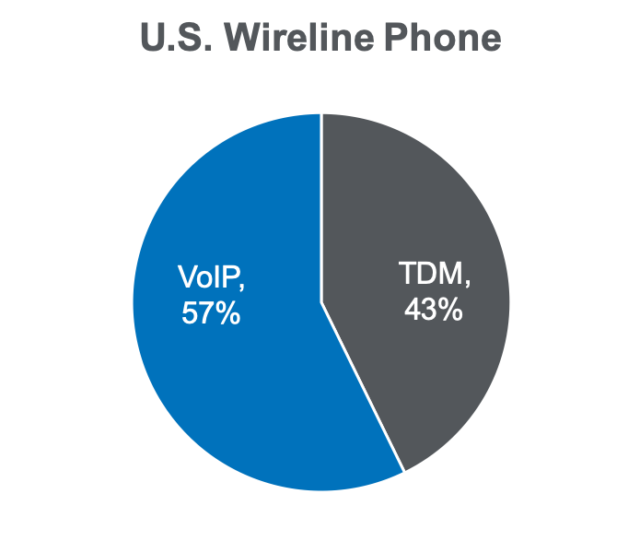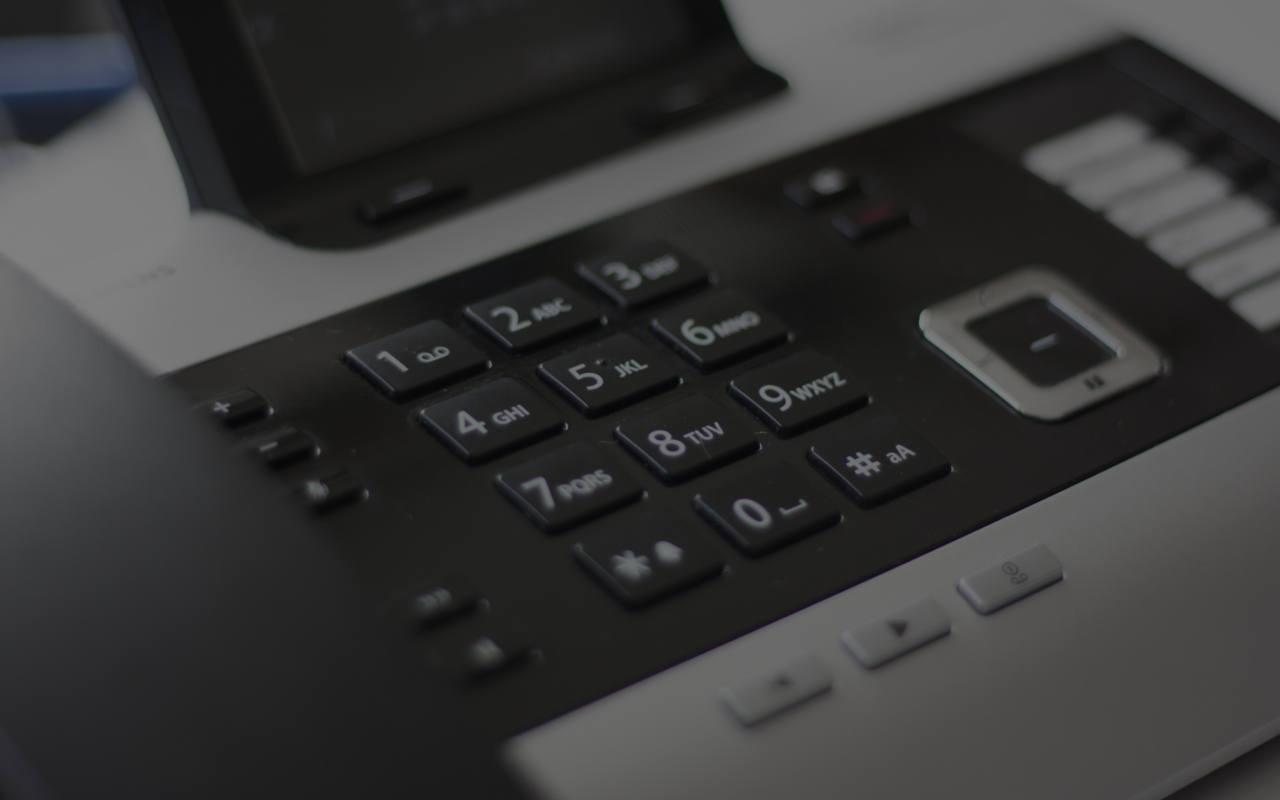The U.S. VoIP market is strong and it’s growing. Despite cord-cutting and wireless-only homes, VoIP subscriptions grew 5% from 2016 to 2017 according to FCC data. VoIP lines have grown 39% since 2013! There are 67 million interconnected VoIP subscriptions, representing 57% of all wireline phone lines in the U.S., upping its share from 52% in 2016. VoIP remains a lucrative market with strong margins.
This is an updated look at wireline/fixed phone in the United States; I first wrote about The State of VoIP in the U.S. in early 2018 using the data that the FCC reports biannually. In December 2017, there were 50 million end-user switched access lines in service and 67 million interconnected VoIP subscriptions. VoIP became the majority of the market at some point in 2016 and it’s increasing its size and share. And there’s still growth ahead with tens of millions of customers that can shift from legacy to VoIP solutions.



The FCC uses Form 477 to collect subscribership information from providers of voice telephone services – the incumbent local exchange carriers (ILECs), competitive local exchange carriers (CLECs), interconnected VoIP service, and mobile voice providers. What this doesn’t capture is the usage of peer-to-peer applications and embedded communications (e.g., a Slack call between users) that are not interconnected to the PSTN. The aggregated results are published in the Voice Telephone Services: Status as of December 31, 2017 (while not current data, it does show the magnitude and direction of wireline voice).
Growing Provider Landscape – There are over 1,700 providers offering fixed phone service, up 4% from the previous year. The VoIP provider universe continues to grow; almost 1,000 now offer VoIP, a growth of 9% from the previous year. And we expect more phone providers, especially as programs like Connect America Fund and Rural Development Opportunity Fund help bring new ISPs into the market.Here is some of the data I found interesting:
- Through the Pipe vs OTT – Only 13% of VoIP lines are classified as over-the-top (OTT), so most VoIP is from operators that also deliver broadband (via what we call communication service providers, CSPs). The FCC defines OTT as the end user has purchased (or has use of) a broadband connection from an entity that is not affiliated with the VoIP service retailer. Notably, a higher portion (25%) of all business VoIP subscriptions are classified as OTT, showing the influence of the numerous UCaaS providers (e.g., Vonage Business, Fuse, Ring Central, and hundreds more) and MSPs.
- Cable Leads, but Declines – For non-OTT VoIP, cable remains the dominant broadband access but has fallen from 62% of all VoIP lines to 49%; and overall cable VoIP lines fell 19% in the year. Cable MSOs started VoIP early and aggressively over a decade ago so it’s not surprising to see that dominance. The percentage of VoIP connected over DSL is still surprisingly strong. Fixed wireless (including satellite broadband)
- barely registers as a percentage of all VoIP lines, but did grow 23% year over year.
- Big Jump for VoIP FTTH – VoIP delivered over fiber-to-the-home/fiber-to-the-premise (FTT/FTTP) jumped to over 16 million lines, up over 116% in a year; it is now 28% of the non-OTT VoIP total lines. This will continue to grow in lines and share as telcos and MSOs convert their plant to fiber broadband, WISPs deploy fiber, and more new ISP enter the market (including municipalities, electric cooperatives, and new upstarts (see Electric Cooperatives Are Lighting Up Broadband in Rural America as an example).
- Residential Leads – To close out 2017, 60.4 million wireline phone subscriptions (or 52%) were residential and 55.9 million (or 47%) were business. It’s even higher with VoIP subscriptions, where 66% of the total lines are residential.
- Business VoIP Opportunity Ahead – Just 48% of all “business and government-grade” lines are interconnected VoIP (and most of that via providers other than the ILEC), lagging the overall VoIP market in the U.S. There’s a remarkable opportunity for service providers to help the millions of small and medium businesses move off legacy TDM phone services to next-generation VoIP solutions. We’ve seen similar survey data showing the majority of the commercial voice market remains on legacy, clunky, obsolete technology, especially for businesses 100 employees or less. Frost & Sullivan expects the hosted IP telephony and UCaaS market to more than double in terms of hosted users/seats from 2017 to 2020.
VoIP came on the scene in the late 1990s and it’s still growing! Are you maximizing your opportunity? If you’re searching for a solution (your first or your next-generation), schedule a call with our team.


